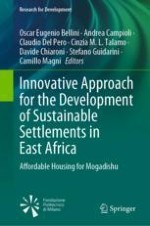
2022 | OriginalPaper | Chapter
Ecosystem Perspective for Sustainable Settlements in East Africa
Authors : C. M. L. Talamo, N. Atta, A. Dalla Valle, A. Campioli
Published in: Innovative Approach for the Development of Sustainable Settlements in East Africa
Publisher: Springer International Publishing
Activate our intelligent search to find suitable subject content or patents.
Select sections of text to find matching patents with Artificial Intelligence. powered by
Select sections of text to find additional relevant content using AI-assisted search. powered by